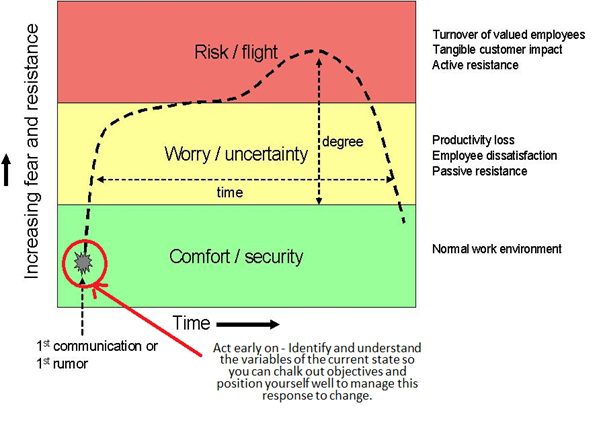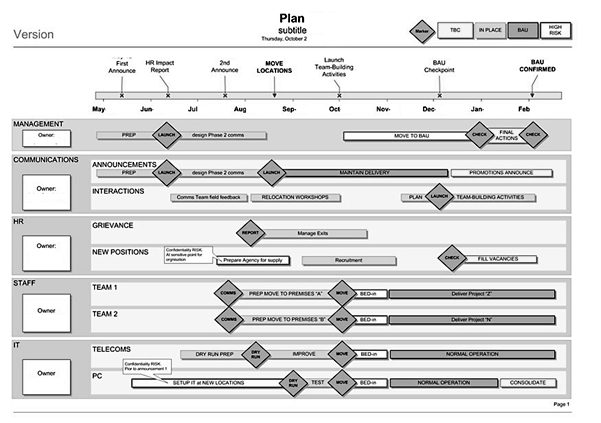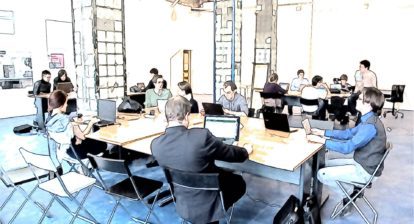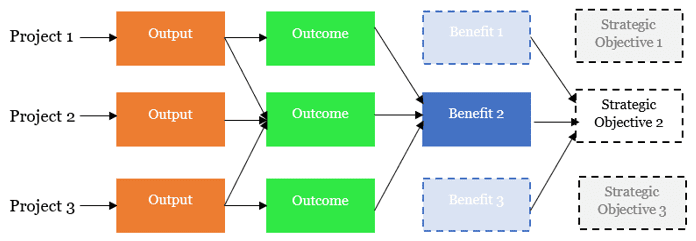 Change is about winning hearts and minds — and sustaining this win. In order to understand how to manage change, you need to understand resistance to change.
Change is about winning hearts and minds — and sustaining this win. In order to understand how to manage change, you need to understand resistance to change.
Management guru Peter Drucker once said, “I am more interested in knowing about people than businesses.” He understood that it’s actually the people you need to think about when analysing resistance. Across your organization, people in different functions have their own perspectives on the change as well as varying degrees of resistance to change. The measured impacts to change can vary from team to team.
It’s not until you examine three factors that play a tug-of-war with resistance that you can start to manage them. What are the three factors? According to Richard Beckhard and Rubin Harris, who published a change formula in the 1970s, these are the crucial elements that drive change:
- Dissatisfaction with the current state; people within the business must be dissatisfied with the current situation and ready for a change;
- Attractiveness of the solution being proposed to take the business to the desired state; and
- Practicality of the steps being planned to accomplish the change.
To put these into the form of a formula:
(Dissatisfaction x Attractiveness x Practicality) > Resistance to the change
Countering resistance requires all of the other factors put together to outweigh it. Let’s look at specific approaches from a high level for responding to and managing (and overcoming) resistance to change.
Understand the Causes of Resistance to Change
People love their offspring
When an individual or a team has developed intellectual property or a method for doing work, it can become precious to them, especially if they’ve been recognised for the achievement of the method. This behaviour can cause people to hold on tight to their inventions when a sweeping change is perceived as threatening to replace the way they work and produce deliverables. The behaviour is especially common within a technology-enabled change project, such as document management or business process re-engineering deployment where specific tools or manual processes invented by people to perform their job are now being replaced by a standard enterprise-wide system.
People get comfortable working in silos
People get used to working within functional units while interacting with a select chain of others in order to perform their work. Often, their interaction with other functions is virtually non-existent, making the organisation a group of silos. So they may resist an upcoming change such as an enterprise resource program implementation that’s intended to connect and establish interfaces between functions such as human resources, finance and purchasing departments.
Risk and fear of loss
Uncertainty, fear of failure and fear of job loss will also cause resistance to an upcoming change. Just look at what happens when a car assembly line shifts to robotic arms. Suddenly, the people who work in that plant know some of them will lose their jobs. Unions will go on strike, the media will smell a good story and management needs to gird for a fight.
 Simple Inertia Causes Resistance to Change
Simple Inertia Causes Resistance to Change
Don’t forget Newton’s first law of motion, also called the law of inertia, which states that an object at rest stays at rest and an object in motion stays in motion until it’s acted upon by a different force. In the business environment, when people are in their comfort zones, it’s quite a challenge to have the role of “change agent,” knowing that you’re going to have to be that “difference force.”
Know Your Current State; Establish a Reference
Before the introduction of a transformation program, a common practice is to perform a formal assessment of the business by involving the leadership. The leadership team needs to work with the change team to engage key stakeholders in order to assess the capacity for change among individuals and business unit levels. This assessment will ask:
- What factors are causing and will continue to cause resistance to change?
- Are there processes to support change and are they well defined?
- Does the organization have an enabling culture for change?
- What kind of funding, reserves and people are available to support the change?
The questions can be asked as part of a detailed questionnaire released to the stakeholder community. The findings from the survey can feed into establishing a baseline or reference for the characteristic features for the change environment.
For instance, a financial building society carried this assessment out during a major EPM upgrade programme in order to assess its environment for change. The findings were fed into the assessment tool’s analysis framework. The outcome was the establishment of a reference of all the features and agents that enabled or resisted change and the levels measured in order to provide insight of the current state for leadership’s decision-making.
The assessment can be carried out at any time during the change lifecycle; but best practice suggests running it for the first time before the change journey begins. The diagram below, adapted from the Prosci “Flight and Risk Model,” helps identify the stages of increasing fear and resistance as time passes during the lifecycle of the change.
Source: Prosci Flight and Risk Model
It’s worth noting from the diagram that the variables that affect the scope of change and resistance to change need to be identified and recorded early on in order to give the change team better bargaining power and time to manage the response to change. For instance, if increasing rumours and behaviours of uncertainty are sensed in the organisation during the change assessment, the change team can incorporate a robust communication routine with defined channels and frequency to help engage with the stakeholders on the shared objectives. Effective communication of the change objectives will help ease the ambiguity and spread of rumours.
One example I witnessed involved a merger between two companies during which rumours started to fly about a management buy-out and the direction of the business. The amount of uncertainty increased as did attrition. The leadership worked with the integration change team to perform a “current-state” analysis and develop recommendations, which included “all-hands” sessions to bring employees on board with the shared vision of the company. The implementation of this communications drumbeat started to influence the company’s turnover and decreased the number of rumours.
I should also mention that the communication and cascade of the shared vision was linked to managerial performance and reward. It was a simple but powerful measure that helped enforce certainty and controlled the changing culture in a positive way.
Take Time to Say Why the Change Is Required
The output from the process of defining and analysing the current state provides the input to answer the question on the reason for change. However, the business case for change involves detailing the scope and linking the benefits to the costs of the change.
A forecast of benefits is needed. Also, the change team should work with senior stakeholders in identifying risks and issues that may arise if this change isn’t implemented. The above elements will help in compiling the case for change.
An example. During early stages of an intranet upgrade programme within a professional services organisation, the knowledge management team worked with the stakeholders in gathering pain points from a current state assessment; then it constructed a business case for change with the scope, benefits, concept and next steps highlighted in the case. This was a time-consuming effort that involved rigour in getting an accurate assessment of the current state. However when it was presented to the board and the sponsor, the case proved effective in seeking senior leadership buy-in because it helped clearly understand the link between the benefits of change and the objectives.
Seeking a Communication Plan?
If you’re unsure what a communication plan for a project should consist of, Bonnie Biafore offers this practical communication plan on MPUG.
Support Objectives with a Plan of Implementation
During the engagement phase of the change journey, momentum should start to gather. You need to leverage this movement forward through a set of well-defined milestones and specific actions that include the initial steps in implementing the change. It’s a must that these actions align to the overall shared objectives that have been communicated earlier.
An initial task plan equipped with a high-level plan and quick wins is absolutely necessary. The plan needs to include input from all agents of the change network and also cover the tasks aligned to the timeline, resource and change milestones.
These initial steps pave the way for the stakeholder community to understand the link between the shared objectives and the tasks for making the change a reality. Helping people make that connection between where they are now and how they’ll get to where they’re going helps overcome resistance.
The plan also brings together the change team members and the wider circle of stakeholders to feel like they have a role in the change implementation.
A sample task plan with timeline, tasks summary and milestones.
Remember: The resistance barrier to change is overcome by focusing on three vital factors:
- Dissatisfaction with current state;
- Attractiveness of the proposed solution; and
- How practical the steps are to execution.
Each factor represents an opposing force to counter resistance and help bring about successful change. Never underestimate the human aspect in finding success while managing change.
Image courtesy of Raphaël Thiémard under a Creative Commons license (CC BY-SA 2.0). Photo cropped for inclusion.








